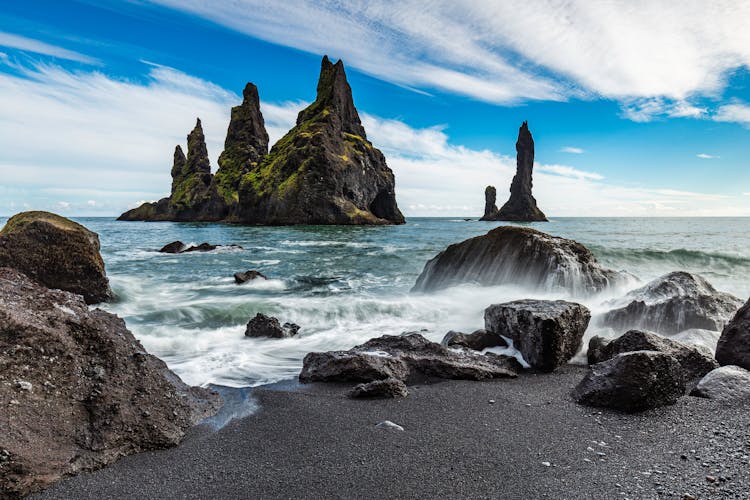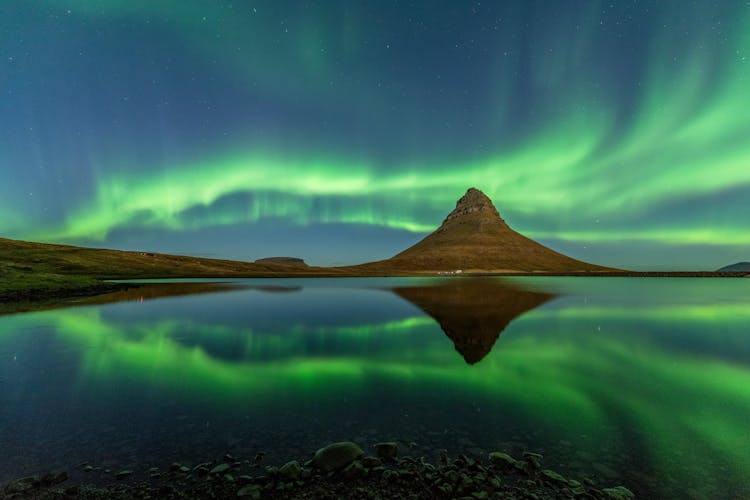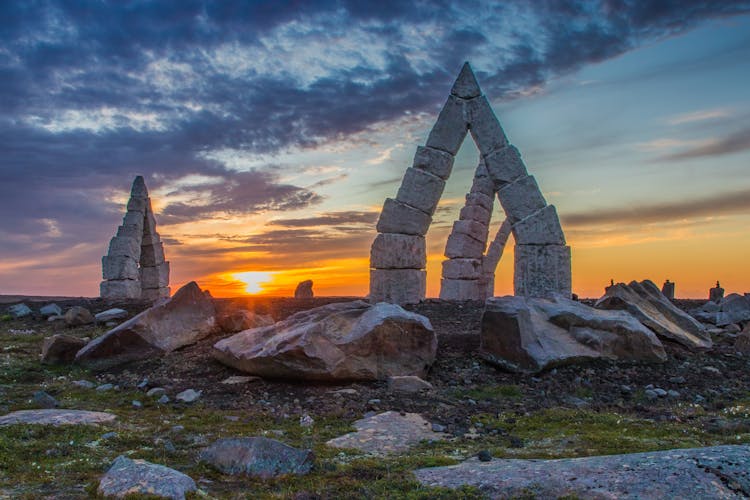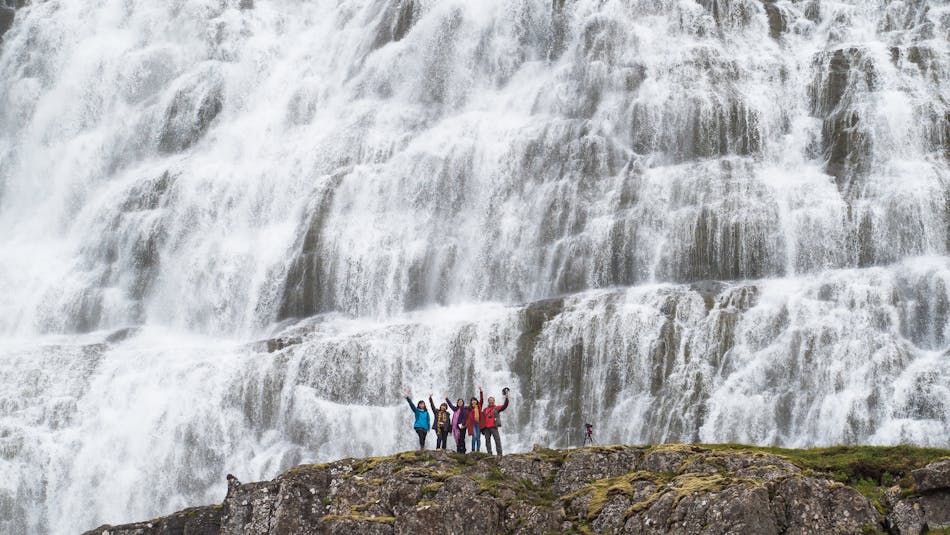
Dynjandi Waterfall is sight to see up close in the Westfjords
Iceland's Westfjords region is an outdoor paradise—perfect for visiting any time of the year. Explore this magical region and witness stunning viewpoints, mountains, wildlife, geothermal hot springs, and more.
Iceland is split into seven geographical regions, each differing slightly in culture and landscapes, but all are distinctly Icelandic. The regions are The Westfjords, South Iceland, East Iceland, North Iceland, West Iceland, Reykjanes, and the Reykjavík capital area. Here are ten stunning places to check out while traveling the Westfjords.
1. Dynjandi Waterfall
The "poster waterfall" of the Westfjords! Simply enthralling, Dynjandi waterfall is breathtaking during every season. The most significant drop and widest part of the waterfall attracts all the attention—and photos—although there are impressive, albeit smaller, falls cascading below along the trail. Dynjandi is made up of seven waterfalls, each with its own name.
2. Hornstrandir Nature Reserve
Hornstrandir is the realm of the Arctic fox. In the 1950s, the inhabitants of this remote northernmost "finger" of the Westfjords were relocated south. Today it mainly attracts day visitors interested in exploring the still-maintained historic sites and serious, multi-day "gore‑tex & tent" hikers. There are three main attractions: 1) The 500-meter (1,600 feet) high cliffs are teeming with bird life surrounding the bay of Hornvík. 2) The area's remoteness with no infrastructure and very few tourists. You can hike for days without seeing a single person, and nature is raw and untouched. 3) Because of the hunting ban, lack of people, and plentiful birds, chances are excellent that you will spot a graceful Arctic fox.
3. Ísafjörður
Ísafjörður is the largest town on the peninsula and the capital of Westfjords. It's located deep in the fjord, surrounded by astonishing mountain scenery. The downtown is charming, with quaint shops, cafes, and restaurants in what is still a working harbor. You are never far from an adventure when you are in Ísafjörður.
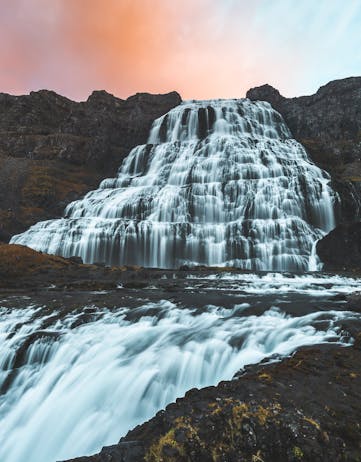
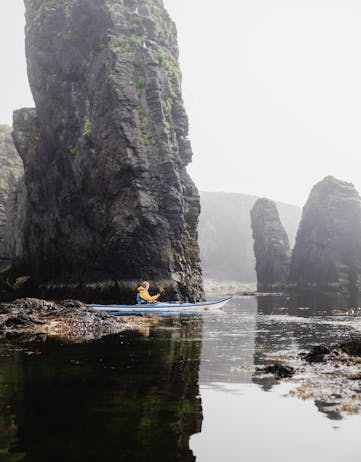
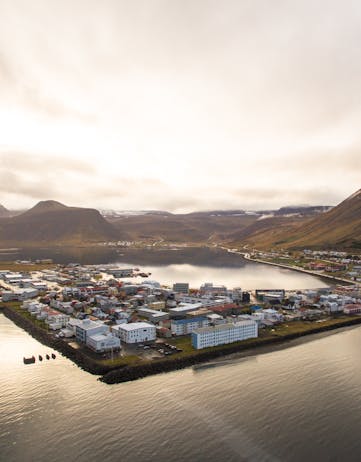
(L to R) You can't miss Dynjandi Waterfall, people are few and far between in the remote Hornstrandir Penninsula, and a bird's eye view of Ísafjörður, the largest city in the Westfjords.
4. Laugarnes Geothermal Pool
Like Hot spring pools with a view? Laugarnes geothermal pool is ideally placed for a hot soak with stunning views over Breiðafjörður. There is a small concrete pool for floating and smaller pools closer to the shoreline.
Most tours, especially day tours, depart from Ísafjörður. Hikers wanting to go on their own can also take boats from Norðurfjörður.
5. Rauðasandur Beach
Rauðasandur (Red Sand in English) Beach is a stark contrast to what you usually see in a country full of black sand beaches. The sand ranges in colors from white to yellow through reds and blacks, depending on the weather and light. The sand varies from very fine to tough-on-your-soles chips of seashells. Rauðasandur is an oasis of remote tranquillity with plenty of birds and seals.
6. Látrabjarg Cliffs
This westernmost point of Iceland is a 14-kilometer (9-mile) line of cliffs, some up to 441 m (1,500 ft) high. Peering (safely!) over the edge is a dizzying sight. The cliffs are a safe haven from foxes during the nesting season. A paradise for the birds and for bird watchers. Interestingly, the birds are fearless due to a lack of predators. The puffins are remarkably tame and frequent the grassy, high-elevation cliff areas. Use caution! The edges are fragile and loose, and a fall would be devastating, to say the least.
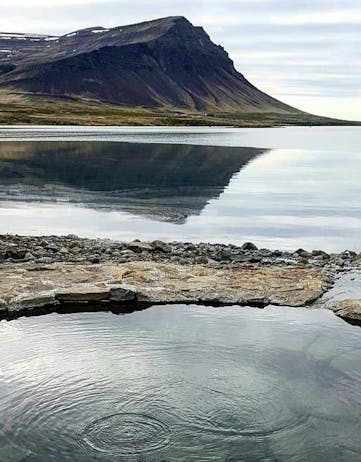
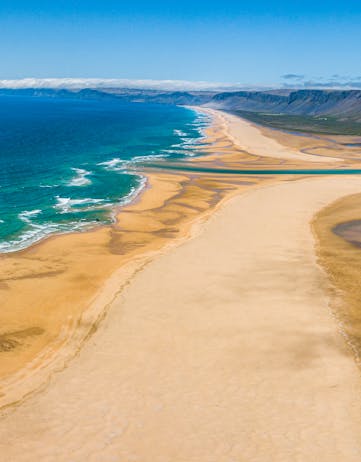
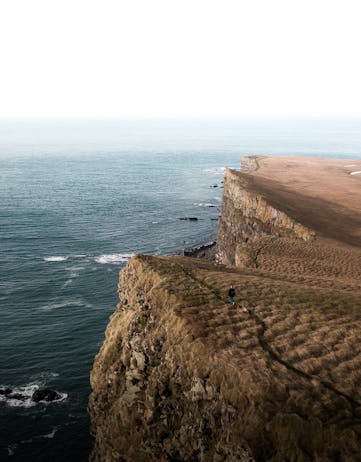
(L to R) Laugarnes Geothermal Pool, Rauðasandur (Red Sand) Beach, and the Látrabjarg Cliffs are a paradise for birds and bird watchers.
7. Edge of Iceland - Bolafjall Observation Deck
Rising above the charming town of Bolungarvík, 638 meters (2100 feet) high, Bolafjall Mountain provides a staggering view over Ísafjarðardjúp, Jökulfirðir, and some say all the way to Greenland. The Americans built a radar station at the top on January 18, 1992, which the Icelandic Coast Guard now operates. In the fall of 2022, the new Edge of Iceland - Bolafjall Observation Deck opened. This stunning deck juts out over the precipice for a staggering new perspective of the cliffs and fjord.
8. Djúpavík Village
Djúpavík village is a living relic of Iceland's booming economy in fishing. The town dates back to 1917 when a herring factory was built to process the catch close to the rich fishing grounds of the Westfjords. It ceased operations around 1920 due to a decline in the demand for salted fish. Today, the abandoned factory, the shipwreck next to it, and Hotel Djúpavík are popular spots for visitors to glimpse the olden days. The location is also famous as the place where Batman (Ben Affleck) and Aquaman (Jason Momoa) meet for the first time in Zach Snyder's Justice League film.
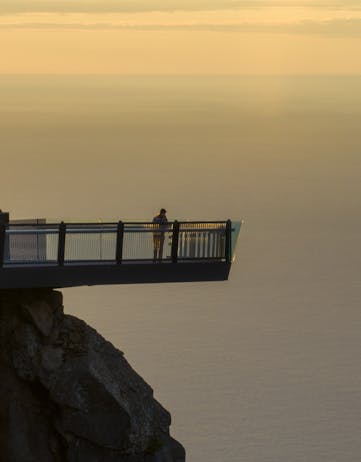
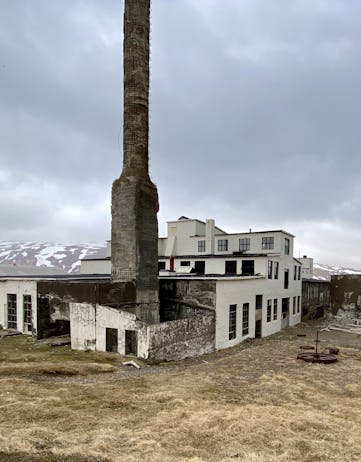

9. Drangsnes Hot Pots
It is hard to miss the hot tubs of Drangsnes! These hot pots are right next to the road going through town. They are located by a picturesque beach overlooking the magnificent fjord. A perfect spot to experience the Icelandic bathing culture. There are changing rooms and bathrooms, and admission is free—with donations accepted.
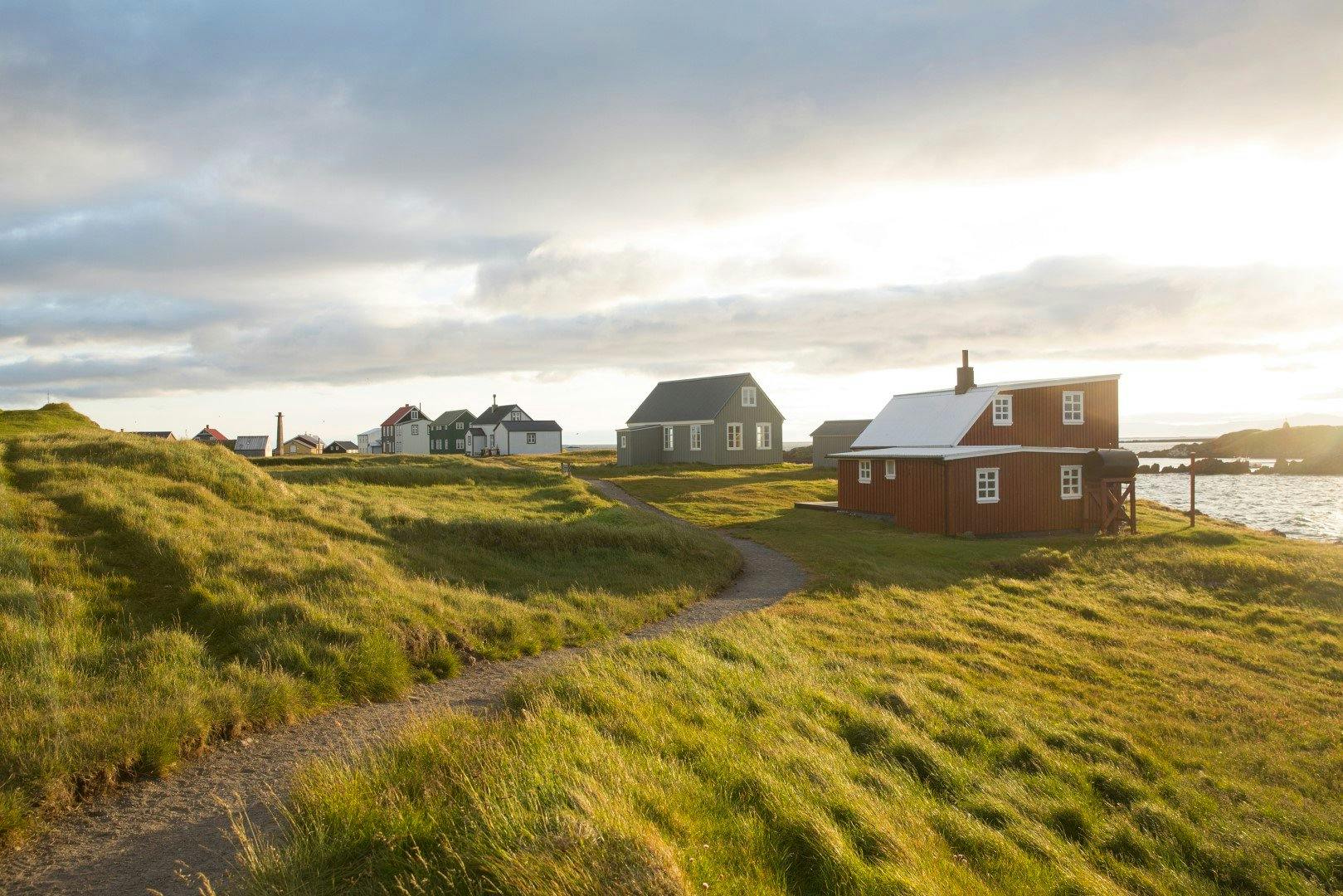
Flatey is the largest island in Breiðafjörður. Photo: Axel Sigurðsson.
10. Flatey Island in Breiðafirði
Flatey (meaning "flat island" in Icelandic) is a 50-hectare (124-acre) island located in Breiðafjörður, the second biggest fjord in Iceland, and located in the northwest. Flatey is the largest island out of about 2,800 in the fjord. Flatey is the only island in Breiðafjörður where inhabitants live year-round. There may only be around six there in the winter, but the numbers swell during the summer. Flatey, along with many other islands, is a critical nesting site for many sea birds, especially puffins.

